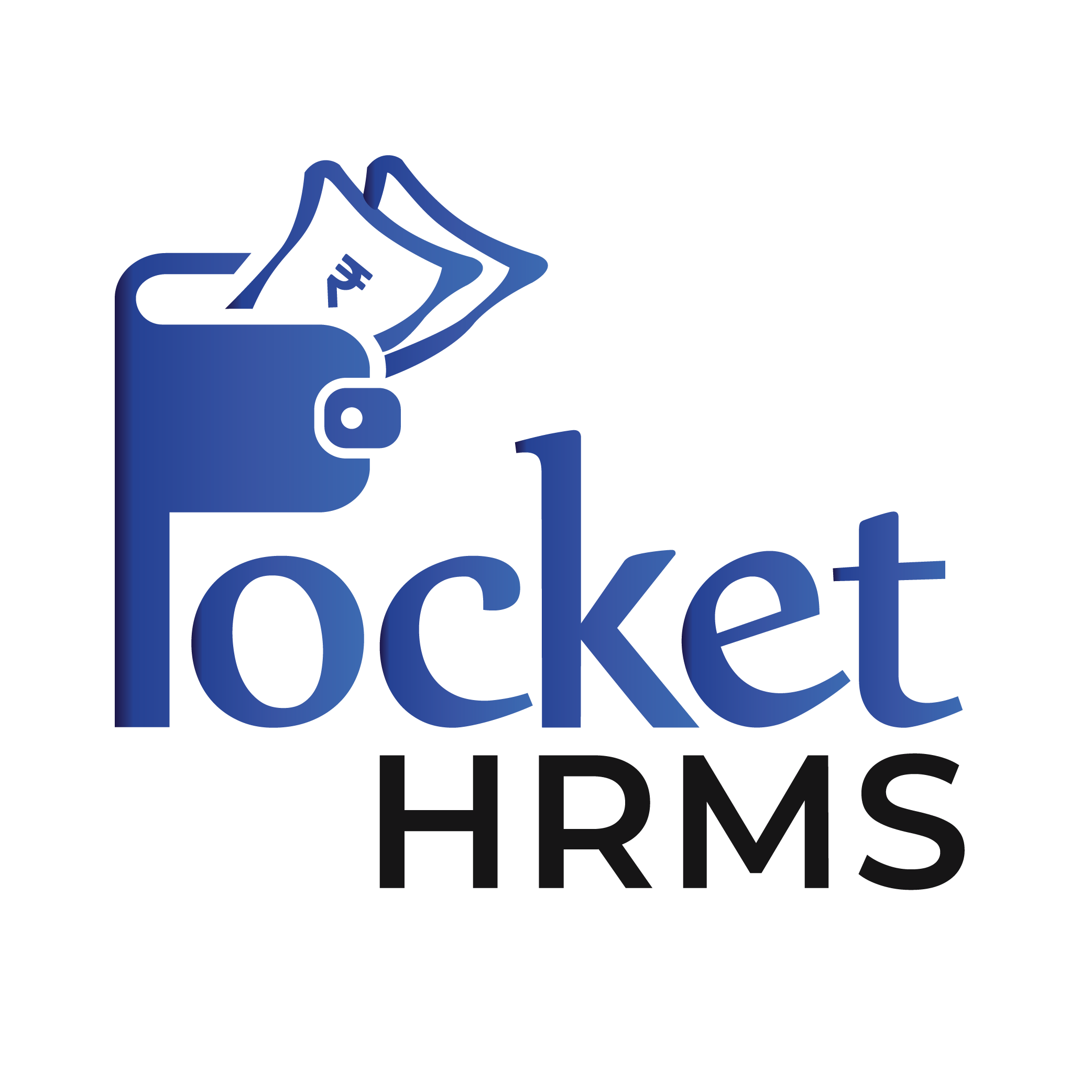What Is HRM?
The most frequent question asked when it comes to employee management is- what is human resource management? Human Resource Management defines a term devised to describe a member or a team of members who handle all the aspects of every employee in any given organization. It is a paramount department in every company.
Without proper functioning human resource management, all the house of cards of any company will start falling. It’s a department that controls various processes from conducting job analysis to handling recruitment and onboarding process to strategizing retention of the employee.
The ancient rule for the HR department is that for every 100 employees, there must be at least one HR manager. Having said that, different organizations have different management needs, therefore an informed decision can be made after perusing the business factors.
Importance Of Human Resource Management
Behind the manufacturing of every product, there are ideas, effort, and manual working hours. No product can be manufactured without these processes. Similarly in all organizations, HR is the base for every process. Every company wants to have an experienced and highly skilled employee, and this is ensured by Human Resources.
Although it may feel different to refer to people as human resources, that is their exact job. To peruse and identify the perfect human candidate for an organization that will be a valuable resource.
Read More:
What is Human Resource Management?
Let us first break down each term to have a better understanding of what it entails;
Human: Skilled and talented workforce which make up a company.
Resource: The amount of availability, whether high or scarce.
Management: Optimizing and handling all the processes by making the best use of all the resources.
Thus, human resource management is created for optimal utilization of resources at hand to make the business grow, and succeed. Many researchers claim that soon all the human clan will be replaced by robots. But, how are robots going to be made, operated, and monitored? By human beings only. Therefore, the need for the human workforce is going to exist forever.
This is the reason organizations are always on the lookout for an experienced, talented, and skilled workforce to reach the epitome of success.
Purpose of Human Resource Management
The key purpose of human resource management is to find a suited candidate for their company and deal with all the processes related to an employee till the time they are a part of the organization. To perform a particular job role in a company the ideal candidate must be identified.
This is done by human resource management by sending out a description of a particular job role and the skills and talents that the role entails. Based on their qualifications and talents, a candidate gets hired.
Subsequently, proper training is then organized to decide which employee would fit better in which role, depending on their experience and skillsets. Later, performance evaluation is conducted, preferably on a regular basis, to give feedback to the employees on where they are acing and where they are lacking. Accordingly, appraisals must be given to an employee based on what they deserve.
All of this is taken care of by a human resource management department. The satisfaction as well as the management of all the employees in a company will determine how committed they are to their job. This is where the job retention strategy by human resource management comes into play.
Certain techniques are adopted by companies to ensure that their workers are happy and see themselves working in the company for the long haul. The feeling of safety is also crucial in an organization, therefore various policies are applied via the human resources department to ensure that the employees feel secure in their workplace.
When it comes to human resource management, the advantages are plenty and inevitable. Alan Price has pointed out in his book “Human Resource Management in a Business Context”, the top 10 benefits when it comes to HRM, the top 10 C’s, namely, cost-effective, competitive, credibility, commitment, change, competitive advantage, communication, coherence, comprehensiveness, and creativity.
Let us dig deeper and learn the advantages of each C;
1. Cost Effective
As it is said, money saved is money invested, and rightly so. If a company ends up hiring a candidate without any background check of qualifications or skills, there is a high chance of the company’s money going down the drain. It’s crucial to know which candidate is suited for which role, therefore human resource management plays an important role in cutting down the company costs by hiring the right candidate.
2. Competence
Human resource management drafts the processes in such a way that all the employees are aligned with the goals and targets of their respective organizations. They know what is expected from them since joining, and they try to achieve it time over time.
3. Credibility
Employees are known as the crucial assets of any organization, without them, any business will come to a standstill. Human Resource Management helps in hiring the perfect candidate for the organization, which by default increases the credibility of a company.
4. Commitment
To ensure a low turnover, it’s essential to retain the employees. Human Resource Management adapts techniques to create a healthy bond of commitment between the employee and the company, which helps in retaining the employee too.
5. Change
In the ever-evolving world, the companies have to evolve too. Human Resource Management changes according to the world, it adapts and implements new rules and cultures with the changing world to ensure that the company is up to date with all of the latest trends.
6. Competitive Advantage
Human Resource Management keeps a tab on all of its competitor’s moves, and they try and incorporate new ideas which their competitors aren’t applying, thereby attracting top skilled candidates.
7. Communication
Maintaining proper communication between everyone in an organization is a must. If the employees feel they are unheard or not valued, they will call it quits. To ensure effective communication. HRM creates a common platform for everyone.
8. Coherence
Various activities and rewards should be organized to create a healthy competitive atmosphere and a healthy bond between everyone.
9. Comprehensiveness
Human Resource Management of an organization should handle all the aspects of employee management, right from recruiting to the post-separation process.
10. Creativity
When it comes to standing out from the competitors, a company must have Human Resource Management with unique thinking skills and ideas.
The above points support the argument that good Human Resource Management is crucial for every organization in today’s competitive world.
Also Read:
Key Responsibilities of the Human Resource Manager
Human resource management processes are preferably placed in proximity to the center of the company, with an approach to all functions of the business. Since a human resources manager is responsible to increase the efficiency and productivity of the company, they should have access to all the data related to the organization and the employees.
Human Resources Management formations vary from company to company, depending on different sizes, types, and governing policies of the business that they serve. Having said that, the core responsibilities of HRM is the same whether it’s a small scale company or a large scale company.
The key responsibilities or objectives of HRM include;
➔ Job Analysis
This comprises of perusing and identifying the ideal candidate or the organization. Job analysis is the foundation of all the Human Resources Management practice as it provides crucial information about jobs that are utilized to hire an employee, establish wages, organize training, and make other HRM-related decisions.
➔ Planning and Development
In the modern era, Human Resource managers serve as strategic partners of an organization. They play a crucial role in identifying, developing, and executing a company’s goals. They make sure that the employees’ goals and targets are aligned to those of the organization.
➔ Career Assistance
Gone are the days when an employee stuck to the same job role throughout their career. Nowadays everyone wants to try and test different fields and work on developing their skills. Human Resources Management helps employees with career development and achieve deeper insight into the potential of all the employees.
➔ Increase Employee Engagement
Ensuring that the employee is engaged in the company is very essential. Human Resources Management organizes certain activities to deepen the bond between employees and the company. They create surveys to get feedback from the employees if they have any concerns regarding the policies of the working of the organization. This lets the employees feel they are valued and their opinion is important.
➔ Sympathetic Ear
Every employee wants to feel safe and secured at the workplace. The human resource department is always available to listen to the personal concerns of every employee and help them. To ensure this, HR should create an environment where the employees don’t feel ashamed or intimidated to approach them regarding any harassment or violence.
Employees are far more likely to stay in the organization for a long time if they feel valued and safe. By ensuring these above criteria, Human Resource Management improvises the retention strategy of a company, thereby creating a low turnover.
The work of HR is more complex now than it has ever been. There are numerous efforts that go into handling the employees, from hiring to onboarding, various performance analysis, and much more. The manpower required to handle these tasks without any error does not exist. Thus, to carry out everything efficiently and without any error, there is an inevitable need for HR software for every company.
Many companies now use HRMS. HRMS full form is Human Resource Management System. It’s an amalgamation of processes and systems that connect HR management and IT departments through software.
Good Human Resource Management System can be utilized for recruitment, payroll management, leave management, attendance management, training and development, performance analysis, and overall maintenance of the employee-related data in any organization.
The automation of mundane and time-consuming tasks frees up a lot of time for human resources, helping them to focus on more important areas.
Functions of Human Resource Management System
The prime functions of Human resource management system involve tracking a candidate’s history, salaries, skills, abilities, and accomplishments. HRMS distributes responsibilities so that all the load doesn’t fall on human resources. Such as, through the ESS portal, the employees can update their data without involving HR.
Every module has its own function with an HRMS. Let us dig a little deeper into all the features a good HRMS solution provides.
1. Payroll Management
After hiring the first employee, the company must figure out the best way to handle the payroll. If payroll procedures are disorganized, it can result in a payroll blunder. Payroll errors can result in driving a company to the ground, by causing legal consequences and costing the company a fortune.
Thus, it should be handled with precaution. It’s an extremely crucial activity for the employee as well as the organization. It’s the core reason for every employee working in any given business, apart from statutory compliance. Human Resource Management System automatically calculates the payroll of all employees, keeping the leaves taken recorded, and pays the employee exactly what is deserved.
Good HRMS also provides the employees with automated salary slips, which they can download any time they want through the software.
2. Recruitment
Finding the right candidate for your company can be hard. Making sure that the candidate applying for a particular position has all the skills and talents required the role entails. Human Resource Management System helps in creating ads, letting everyone know what skills are required for a particular job position. This helps in filtering out potential employees.
3. Onboarding
A new employee has many documents to be filled on the date of the joining. HRMS provides a platform for an employee to complete the onboarding process themselves without involving HR. They simply have to go to the online portal and upload all the necessary documentation.
4. Data Management
All the human resources departments contain sensitive data related to an employee such as their personal address, phone number, account details, etc. Handling the data of numerous employees manually can be time-consuming and can cause plenty of errors. The papers can also be misplaced, resulting in a data breach. HRMS makes everything online and automated, thus is there is no room for error of data or misplacement. It also allows the tracking of real-time data of the workers like their leave, payroll, and attendance.
5. ESS
Employee Self Service portal refers to a centralized base of data that is available to all the employees of an organization. Through this feature, the employees can view and edit their data themselves without involving any human resources manager. They can keep a tab on all pay slips, ensuring they are being paid correctly every month, even download it.
They can view the balance of their paid, unpaid leaves, and also apply for leave directly through the portal. The manager can view the request, and approve it within a fraction of seconds. This process saves the hassle of the employee running behind the manager for approval, saving both, the manager’s and the employee’s time.
6. Enhanced Employee Engagement-
An engaged employee is a real asset to the organization. By introducing the ESS portal, the employees feel valued and trusted, that they are given the ability to make changes on their own, apply for leaves easily, etc. This makes their lives efficient, which in turn increases their productivity. Also, HR’s work, which would have otherwise been mundane and chaotic, becomes seamless and leads to higher employee engagement and satisfaction.
7. Statutory Compliance-
Complying with the laws of center and state plays a vital role in the hygiene aspect of any organization. A company can end up having legal consequences if they don’t comply with it, like penalties, which will cost their business a bomb. Modern Human Resource Management System keeps updating the statutory law, ensuring that the organization is in regulation with it, thereby eliminating and legal penalties.
Also Read:
What is the Human Resource Management Process?
The 6 main HRM process involves:
➔ Hiring
Organizing recruitment and selecting your performer is an important HR personnel process. Not just filling up the vacancy makes a recruitment successful, but talent acquisition does.
Selection involves five major steps:
- Tapping the sources like Job ads, Professional networks, etc.
- Scheduling
- Profile parsing
- Selection
- Onboarding
A successful resume parsing and selection process may help you develop a healthier and performing workforce. A performing workforce is the only way to make business grow in right path.
These days, organizations have developed a lot in terms of recruitment. Candidate sources have been changed to in-house on a large scale. In-house recruitment involves ex-employees, mutual contacts of current employees, and similar.
➔ Training and Development
Training and development of employees occurs after their onboarding is done. This is to ensure your employees are doing what they are expected to. Right training strategies will improve productivity and make your previous process i.e. hiring, a success.
New joiners must be trained and molded properly in order to make your plan work. This can be done either by the team lead or a dedicated training authority. The HR needs to ensure right training process is being followed and involved people are on same page.
Training an employee for their role also gives you an opportunity to make them familiar with your values, laws, culture, and work delivery. Some of the prime benefits of the process include less employee turnover, better work quality, etc.
➔ Performance Management
Once you have provided the tailored training to the workforce and invested hiring time and efforts, it is now time to evaluate their performance. Performance management helps you determine the worth of your till-then efforts.
Performance evaluation may involve collecting feedbacks from colleagues, manager, and client (if involved). Voting parameters like attendance, delivery, deadline follows, quality, ethics, etc. may help you the required profile of the employee. This will then lead to demotion or promotion based on their score.
Performance evaluation is one of the most important employee management strategies. This will keep them engaged and motivated to work improvement.
➔ Employee Motivation
For a performing workforce, it is most important to keep your people sane and engaged. As the previous process explains, employee performance is a parameter that must be recognized to motivate workforce.
Do not forget to recognize employees for their hard work. Performance appraisal or benefits could be great when it comes to reward your performers. Performer rewarding may bring in huge benefits to company with minimal investment.
The performance of employee depends solely on motivation and benefits provided to them. A truth- its all about give and take. You provide them motivation (which is actually worth to individuals) and they perform for you. A raise in salary, free lunch, cultural events, sports day, etc. may be worthy at instances.
Remember – Appreciation is the key!
➔ Compensation and Benefits
First and foremost, compensation and benefits has a direct impact on our previous HRM process. As the name itself suggests, employee benefits play a key role in developing an engaged and motivated workforce.
Compensation makes it easy to manage employee components like leaves, payroll, deductions, arrears, loan, etc. Compensatory off, carryover, encashment, are some types of compensations.
The reason behind compensation management is to design a low cost pay structure that attracts and retains competent employees. Compensation and employee benefits at an organization may play an important role in building employer brand.
Compensation and allowance are some of the salary parameters, which needs to be accurately calculated during payroll.
➔ Compliances
Compliance management is very crucial to a company when it comes to workforce management and adhering to labor laws. Every company/ entity has to follow the laws and regulations set by the central.
Compliance management is all about keeping the people aware of compliances and laws. Employee must be aware of it too. HR managers needs to keep a track of the same. Why is it so important to adhere to compliances and employment laws?
Failing to follow and breaking the law may lead the organization behind the bars or bring in penalties. Transparency and knowledge are two factors that helps you keep abide with compliances and laws.
Conclusion
Thus, it is evident that a Human Resource Management System provides a means of receiving, storing, and handling crucial data in an organization. It helps in removing the mundane traditional processes, thus enhancing the strategic decision-making capabilities of Human Resources.
Early systems used to focus on single tasks, one at a time, since they did not have the resources to handle everything simultaneously. With the advancing world, technology has developed as well. Management of even a large scale industry is now easy, with the integration of a powerful HRMS.
Pocket HRMS is one such cloud based HR software. To learn more about us, contact us here. Also, you can write to us at sales@pockethrms.com








